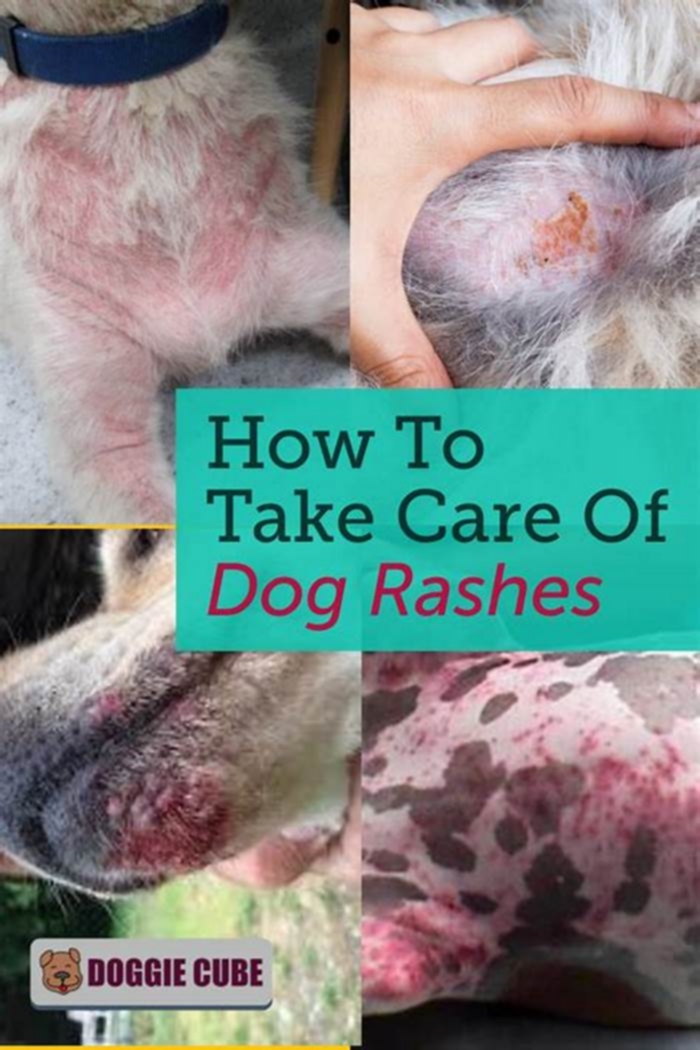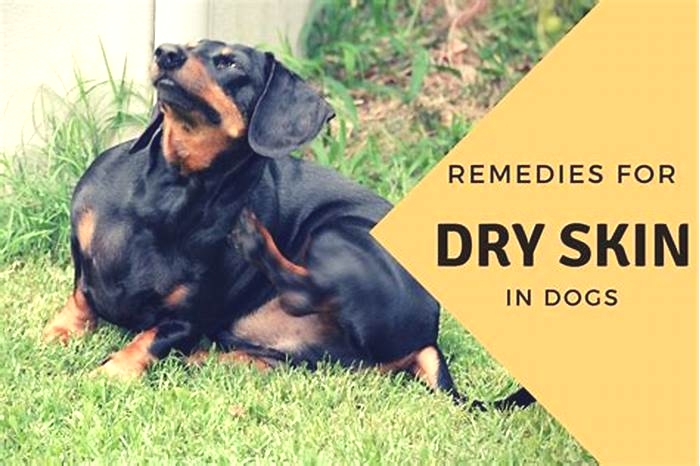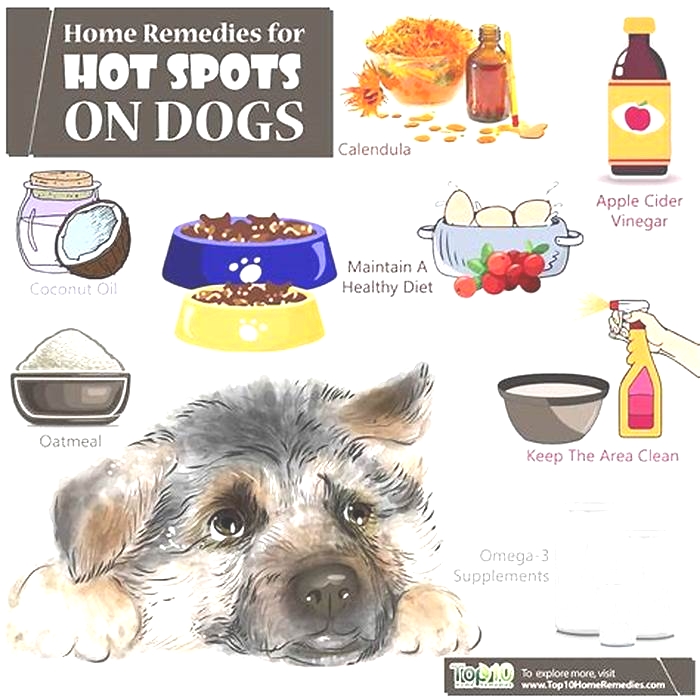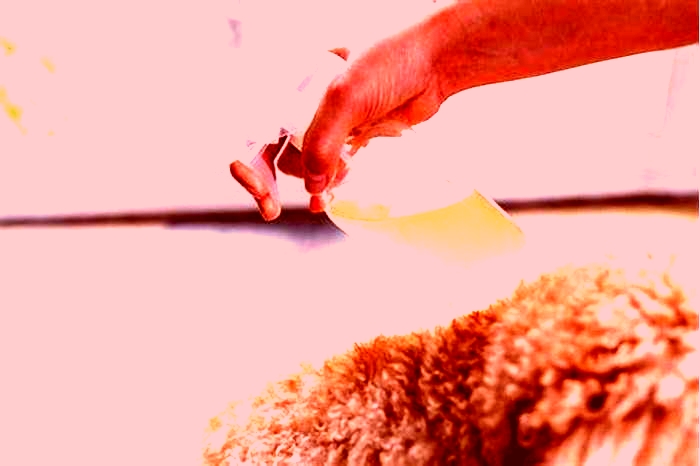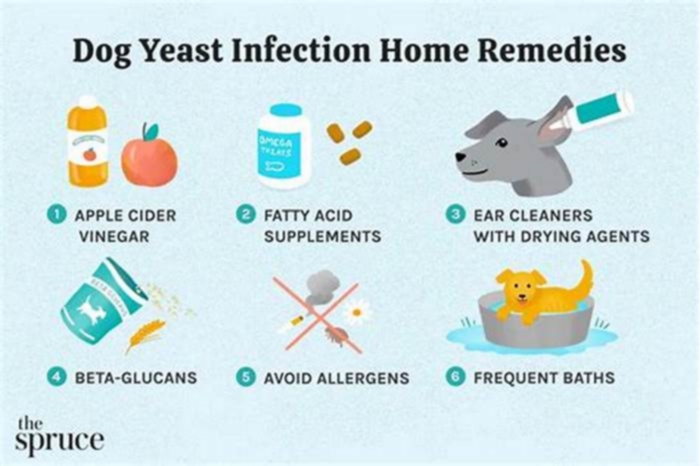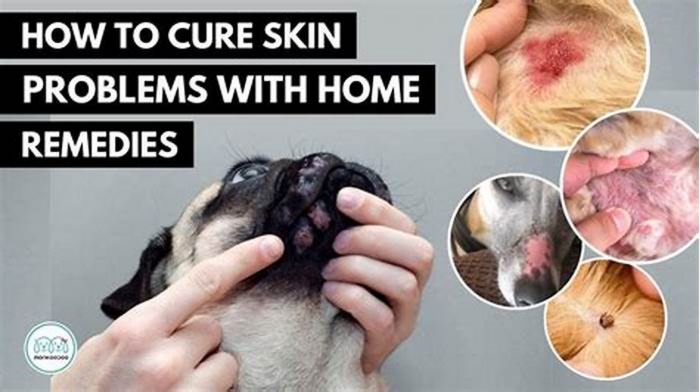Can I treat my dogs rash at home
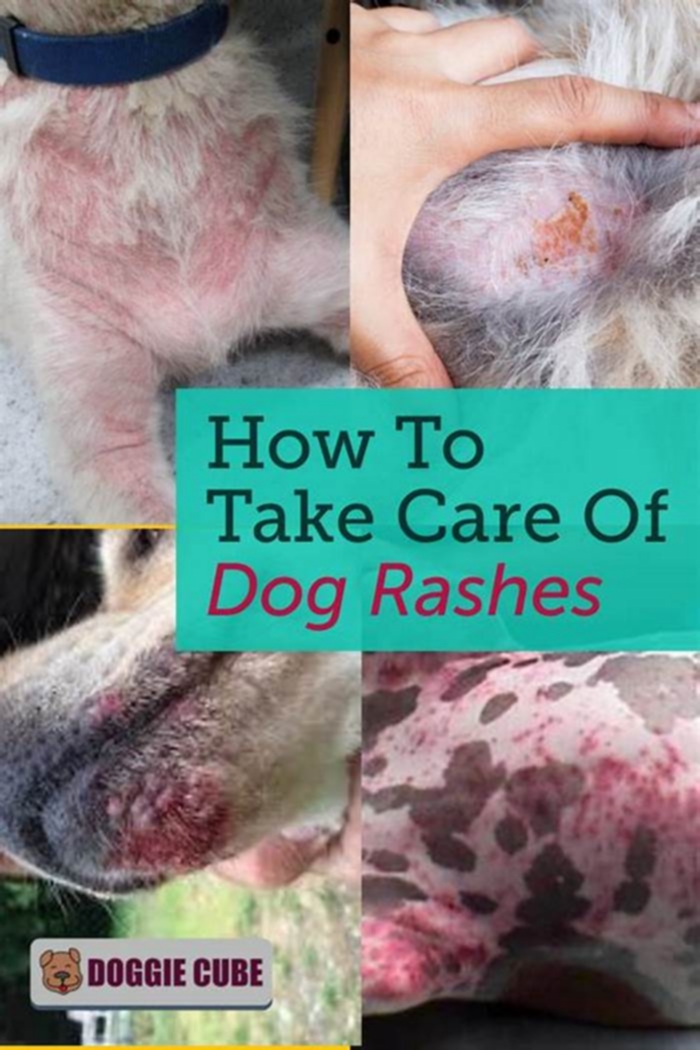
Soothing the Itch: Your Go-To Guide for Dog Rash Remedies at Home
Hey there, pet parents! If youve noticed your furry friend scratching more than usual or spotted some concerning rashes, youre in the right place. Were about to dive into the world of home remedies for dog rash treatment.
1. Cool Compresses: The Chill Factor
Pros: Easy to apply Provides immediate relief
Cons: Temporary solution May not address underlying causes
2. Oatmeal Baths: The Soothing Soak
Pros: Natural and gentle Helps soothe skin irritation
Cons: Messy and time-consuming Not suitable for all types of rashes
3. Aloe Vera: The Natural Healer
Pros: Anti-inflammatory properties Promotes healing
Cons: Some dogs may be allergic Requires careful application
4. Coconut Oil: The Tropical Touch
Pros: Moisturizes skin Antifungal and antibacterial
Cons: Can be messy Dogs might lick it off before it can work
5. Apple Cider Vinegar: The Acidity Advocate
Pros: Fights off pathogens Can help with hot spots
Cons: Must be diluted correctly Can irritate open wounds
6. Chamomile Tea: The Relaxing Rinse
Pros: Anti-inflammatory Can relieve itching
Cons: Effects are mild Frequent application needed
7. Witch Hazel: The Gentle Astringent
Pros: Soothes skin without drying Good for hot spots and insect bites
Cons: Not for deep or severe rashes Can be over-drying if overused
8. Baking Soda: The Mild Antiseptic
Pros: Reduces inflammation Can relieve itching
Cons: Can be drying Not to be ingested
9. Fish Oil Supplements: The Inside-Out Approach
Pros: Promotes skin health Can reduce inflammation
Cons: Takes time to see effects Possible dietary sensitivities
10. Dietary Adjustments: The Holistic Tweak
Pros: Addresses potential allergies Can improve overall skin health
Cons: Requires trial and error May need consultation with a vet
Now, remember, while these remedies can offer relief and aid in healing, theyre not all-encompassing cures. Its crucial to observe your dogs reaction to any new treatment and consult with a veterinarian if youre unsure about the cause of the rash or if it persists. After all, our furry companions rely on us to make the best decisions for their health and happiness.
In this guide, weve aimed to break down each option with the clarity and insight you need to navigate the world of home remedies. But lets keep the conversation going! Have you tried any of these methods? Or maybe you have a go-to remedy that didnt make our list? Share your experiences and tips in the comments below. Together, we can create a treasure trove of wisdom for pet parents everywhere!
Comment 1: Ive been using coconut oil for my dogs rash, and it seems to work, but he licks it off almost immediately. Any suggestions?
Ah, the classic coconut oil conundrum! Its a fantastic moisturizer and has antibacterial properties, but our canine friends often cant resist a little taste. One strategy is to apply the coconut oil right before meal times or a distracting play session. This way, your dog is preoccupied and less likely to lick it off immediately. Alternatively, consider using a light dog shirt or fabric wrap over the area (if its not too sensitive), creating a barrier while allowing the skin to breathe and the oil to absorb.
Comment 2: Is there a risk of using apple cider vinegar on my dogs skin? How can I make sure its safe?
Great question! Apple cider vinegar can be a powerful ally for skin issues but also has its risks if not used correctly. The key is dilution and caution. Always dilute apple cider vinegar with water, typically a ratio of 1 part vinegar to 3 parts water, to mitigate acidity and potential irritation. Test this solution on a small skin area first to observe any adverse reactions. Never apply it to open wounds or raw skin, as it can cause significant discomfort and potentially worsen the situation. If in doubt, consult with your vet for tailored advice.
Comment 3: My dog has a persistent rash that doesnt seem to respond to home remedies. What should I do?
Persistent rashes signal the need for professional intervention. While home remedies can be effective for minor irritations, a rash that remains or worsens is a red flag. This could indicate an underlying condition such as allergies, infections, or even hormonal imbalances that require specific treatments. Booking a vet appointment is crucial. Your vet can perform tests to pinpoint the exact cause and recommend treatments that might include prescription medications, dietary adjustments, or even allergy testing. Its also essential to consider the environment your dog is in allergens in the home, garden, or diet could be contributing factors.
Comment 4: I read about using fish oil supplements for skin health. How long before I see any improvements in my dogs skin condition?
Incorporating fish oil supplements for your dogs skin health is a commendable approach, given their anti-inflammatory properties and ability to promote a glossy coat. However, its a gradual process. Typically, you might start noticing improvements in your dogs skin and coat condition within 4 to 6 weeks of consistent supplementation. Its important to ensure youre administering the correct dosage based on your dogs weight and the products recommendations. Also, opt for high-quality fish oil supplements that are free from contaminants and specifically designed for pets to ensure safety and efficacy.
Comment 5: Can diet really affect my dogs skin? He seems to itch more after certain meals.
Absolutely, diet plays a pivotal role in your dogs skin health and overall well-being. Dogs can develop sensitivities or allergies to specific ingredients commonly found in dog foods, such as beef, dairy, wheat, chicken, egg, and soy. These sensitivities can manifest as skin irritation, itching, or rashes. Identifying the culprit often requires a process of elimination, known as an elimination diet, where you feed your dog a simplified diet and gradually reintroduce ingredients to pinpoint the allergen. Consulting with a veterinarian or a veterinary nutritionist can provide guidance on implementing this diet safely and effectively. Additionally, a diet rich in essential fatty acids, like omega-3 and omega-6, can help improve skin health from the inside out.
Comment 6: Whats the best way to apply aloe vera to my dogs rash? Im worried about them ingesting it.
Aloe vera is widely recognized for its soothing and healing properties, but its essential to use it correctly, especially around pets who may attempt to lick it off. Firstly, ensure youre using pure aloe vera gel without added ingredients like alcohol, fragrances, or essential oils, which could be harmful to your dog. When applying aloe vera, focus on a thin layer directly onto the affected area, avoiding places your dog can easily lick, such as lower legs or paws. Distraction techniques, such as providing a chew toy or engaging in play, can be beneficial immediately after application to allow the gel time to absorb. If the area is within your dogs reach, consider using a pet-safe bandage or a light, breathable garment as a barrier. Monitoring your dog during the application process is crucial to prevent ingestion, as the aloe vera plant can be toxic if ingested in large quantities.
Comment 7: My vet suggested an elimination diet for my dogs skin issues. It seems overwhelming. Any tips on making it more manageable?
Starting an elimination diet can indeed feel daunting due to its strict nature and the diligence required. However, approaching it with a plan can significantly ease the process. Begin by choosing a protein and carbohydrate source your dog has never eaten before, as novel ingredients reduce the risk of triggering an allergic reaction. Many choose options like kangaroo, venison, or duck for protein and sweet potato or peas for carbohydrates.
Prepare meals in bulk to save time, cooking the protein and carbohydrate together in plain water without any additives. Portion these meals and freeze them for convenience. Keep a detailed food diary to note what your dog eats and any reactions, no matter how small, to track progress and identify potential allergens. Remember, this diet is temporary until you identify the allergen, after which you can slowly reintroduce other foods. Patience is key, as skin conditions can take time to improve even after the allergen is removed. If youre feeling overwhelmed, consult with a veterinary nutritionist for guidance and personalized advice.
Comment 8: Can regular bathing help with my dogs skin allergies, or could it make things worse?
Regular bathing can be a double-edged sword in managing skin allergies. On the one hand, it can help remove allergens from the skin and coat, providing relief from itching and irritation. On the other hand, too frequent bathing can strip the skin of its natural oils, leading to dryness and exacerbating skin issues. The key is finding the right balance and using the correct products.
For dogs with skin allergies, hypoallergenic or medicated shampoos recommended by your vet can be beneficial. Lukewarm water should be used, and the frequency of baths should be based on your dogs specific condition and lifestyle but generally no more than once a week for dogs with sensitive skin. Its crucial to thoroughly rinse any shampoo residue, as leftover product can irritate. After bathing, gently pat your dog dry with a towel, and avoid using a hairdryer unless on a cool setting to prevent drying out their skin.
Comment 9: How can I tell if my dogs rash is from fleas or something else? Hes always itching!
Flea infestation is one of the most common causes of itching and skin rashes in dogs, characterized by small, raised bumps primarily around the lower back, tail base, and thighs. Flea dirt, which looks like tiny black specks in your dogs fur, is a telltale sign. However, other conditions can cause similar symptoms, such as allergies, mites, or infections.
A thorough inspection of your dogs coat and skin is essential. Using a fine-tooth comb, comb through your dogs fur over a white surface. Flea dirt will fall off and turn red when wet, as its essentially digested blood. If you dont find evidence of fleas but your dog continues to itch and show signs of skin distress, its likely another condition is at play, and a visit to the vet is warranted. They may perform skin scrapings, allergy tests, or other diagnostics to determine the cause and recommend appropriate treatment.
HELP US PUT FOOD ON THE TABLE
Heat Rash on Dogs Symptoms, Home Remedies and Prevention
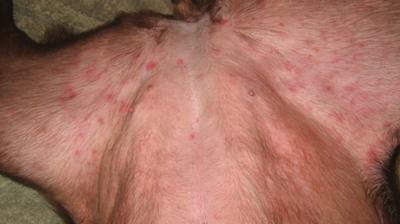
Just like babies react to too much heat through the formation of heat rash on their skin, so do dogs. When subjected to excess heat, your beloved pooch may suffer some tiny red bumps that take the appearance of pimples. This is usually heat rash on dogs. Although rarely a health concern, continued exposure to initial surroundings that resulted in the formation of the pimples could see them get infected. To prevent this, timely intervention is necessary. Below we discuss the causes, symptoms, home remedies and treatments of dog heat rash.
Heat Rash on Dogs
Just like humans, dogs too can suffer heat rash. These rashes are not only uncomfortable but could become painful, swollen and infected. If not dealt with in a timely manner, they could result in inflammation, itching, and anxiety. Heat rashes are as a result of Staphylococcus pathogen which gets aggravated by humid and hot environmental conditions. They exhibit characteristics not so different from those seen in humans as discussed below.
Symptoms of Heat Rash on Dogs
Initially, a heat rash begins as a non-problematic skin irritation. This may result in your dog scratching regularly. The symptoms for heat rash on dogs may include the following:
- Tiny red bumps on the skin.
- Minor irritation on the dogs skin leading to frequent scratching.
- Oozing red rash which may appear as pimples, scabs or boils that develop a bad odor with time.
Dog Heat Rash Pictures
To help illustrate the above symptoms further, here are some dog heat rash pictures.


Home Remedies for Heat Rash on Dogs
Before administering any form of treatment, it is important to ascertain that the rash on your dog is a heat rash. In case you are in doubts, consult your veterinarian. If caught and treated on time, heat rash will not have any negative effect on your dogs health. However, if left untreated and the environmental conditions leading to it remain unchanged, the rash could develop to infected blotches that could result in the deterioration of your pets health. To ease the symptoms and discomfort, try the following natural and home remedies for heat rash on dogs.
1. Cold Packs
When your dog suffers heat rash, they experience inflammation and irritation. There also is a prickly sensation as well as itching. To take care of this, cold treatments in the form of cold compresses or ice packs can help. These are easy to use as all you require is to wrap ice cubes in a washcloth. Frozen bags can also work in the same way. Apply the cold compress on the area with heat rash and hold it for about 10 minutes. This can be repeated every four to six hours to relieve your dog the discomfort of the heat rash. Repeat the procedure for up to three days by which time the cold should have subsided.
2. Baking Soda
Baking soda acts as an exfoliating agent when used on the skin. It helps to unclog pores and get rid of dead skin. In addition, baking soda can help get rid of heat rash on dogs by eliminating itching and inflammation. This will also help get rid of any pain. There are different ways on how to use baking soda to relief dog heat rash:
- In a cup of water, add a tablespoon of baking soda. Dip a washcloth in this solution and use it to wipe the area with a heat rash on dogs. Repeat this procedure as necessary until the heat rash is gone.
- Combine equal amounts of water and baking soda. Apply the resulting paste on the area with a rash and allow it to rest for 20 minutes before rinsing it off.
3. Aloe Vera
This is a perfect treatment for sunburns in dogs and will go a long way in relieving heat rash in dogs. Its healing properties will see it deliver healing qualities to your dogs skin. It will cool the affected area naturally and also stop any inflammation resulting from the heat rash. In cases where itching and swelling are also being experienced, the remedy will take care of it too.
4. Calamine Lotion
For a long time, calamine lotion has been used to relieve various skin discomforts. Given its cooling and anti-itch properties, it will serve as a great remedy for heat rash on dogs. To get rid of the red rashes, simply apply as instructed by the manufacturer.
5. Hydrocortisone Cream
A 1% hydrocortisone cream can be accessed over the counter. This cream will help reduce itching as well as get rid of the associated redness that comes with the rash. Use this for up to three days and not much longer as it could have adverse effects on the skin of your dog.
Additional home remedies that can help in treating the rash include milk of magnesia, oatmeal, and Listerine. To promote fast healing and recovery of the skin, you can give your dog B vitamins, omega 3 fatty acids (cod liver oil, krill oil) as well as vitamin E. These facilitate stimulate tissue repair and create an oily layer beneath the skin thus ensuring quick recovery as well as maintenance of a well moisturized, supple and healthy skin coat in dogs.
6. Apple Cider Vinegar
Since heat rash is common in the folds surrounding the armpits, neck and groin area if they become moist and are not well catered for they could subject your dog to yeast infections. Using apple cider vinegar on the rashes can help curb this. Do not use the remedy without diluting it as it could be too harsh on the skin. Use an equal portion of apple cider vinegar and water and use a washcloth to apply the solution on the heat rash. Repeat this about three times a week.
In case the above home treatments do not work, you will need to talk to your veterinarian for prescription treatments. These may come in the form of oral or topical medication as well as antibiotics in case the rash is suspected to be getting infected. Among these may be cortisone tablets or creams to help quell associated itch and inflammation. Your vet knows best what is suitable for your dog.
Preventing Heat Rash on Dogs
In addition to preventing your dog against sunlight in the summer, you also have to keep watch and ensure they dont suffer heat rash. Humidity and heat are the reasons why your pet suffers heat rash. When leaving him inside the house, ensure the air conditioner is on. When heating up the room, do not allow the dog to stay too close to the heater. Let your dogs surrounding environment be one you would also be comfortable in. In case you are concerned about the rash, talk to your veterinarian.

